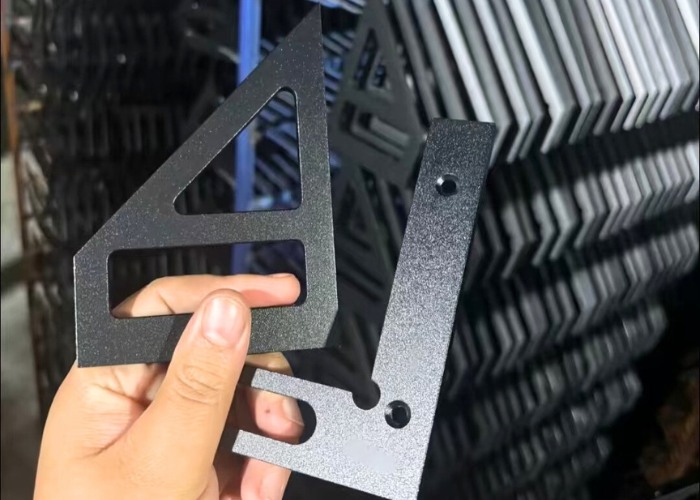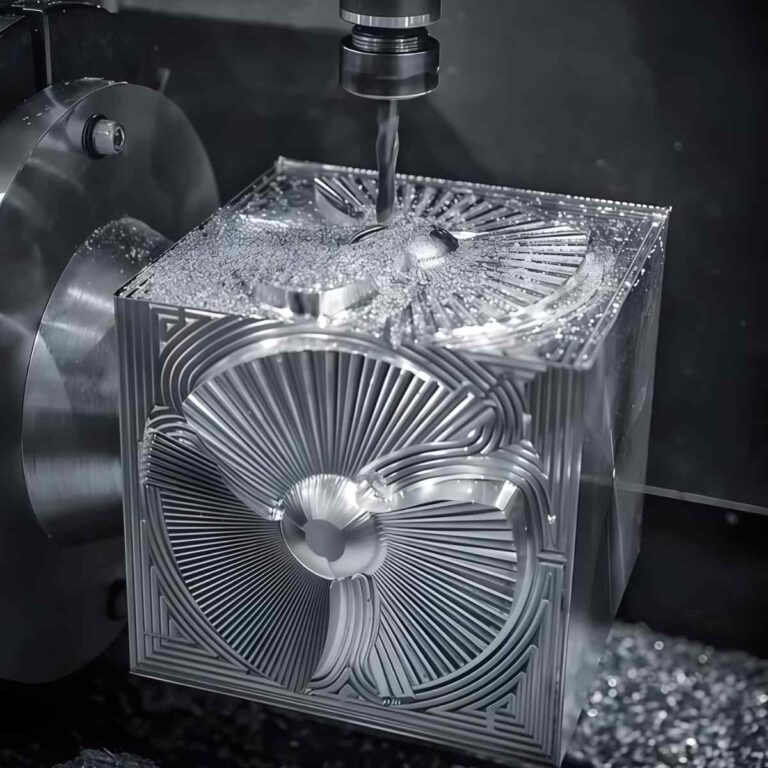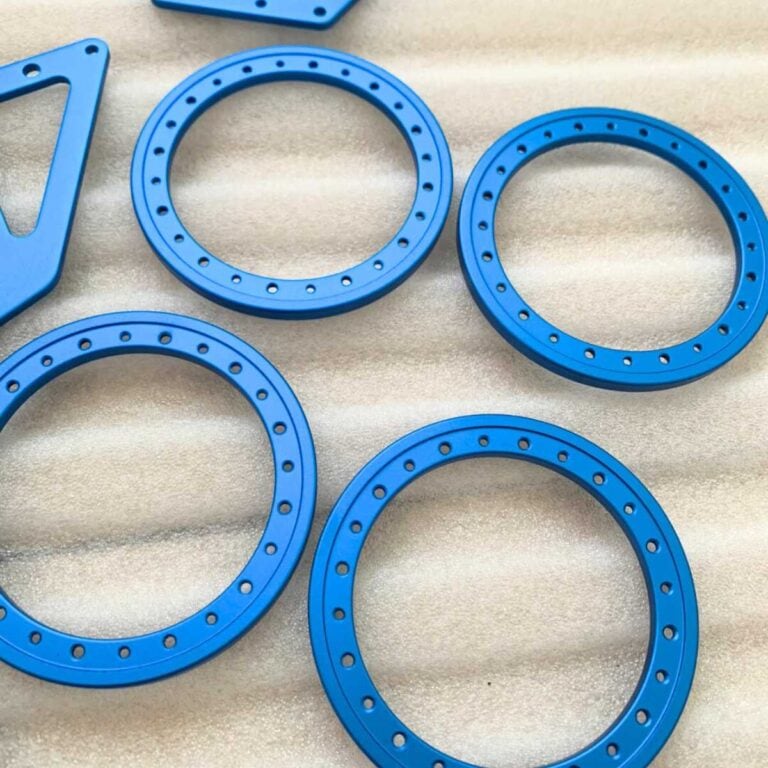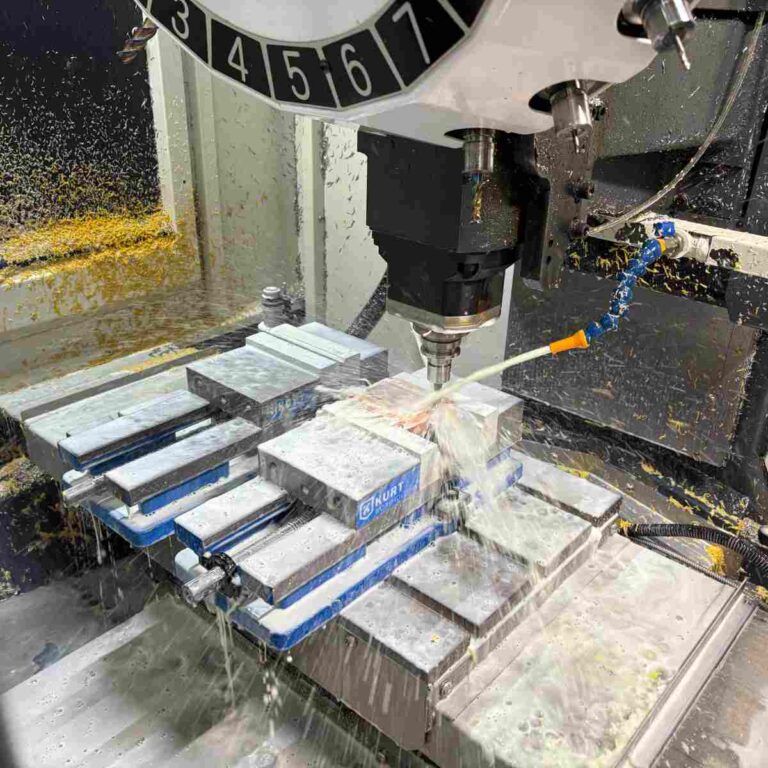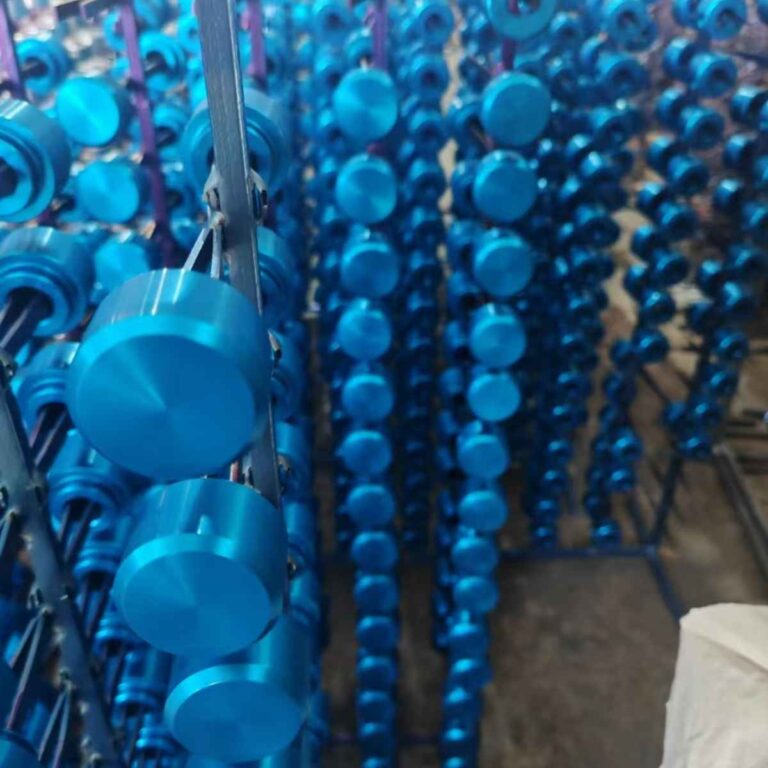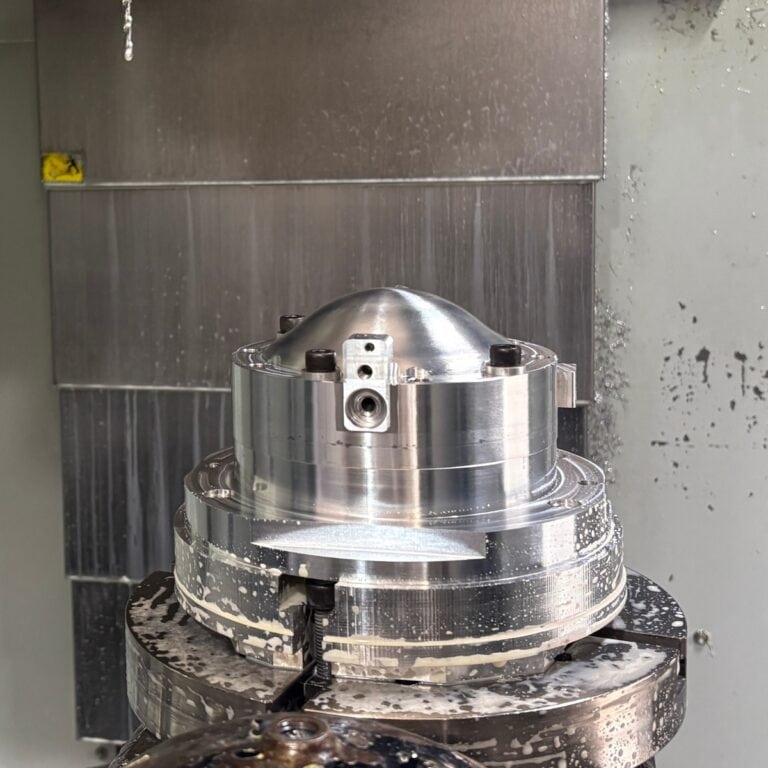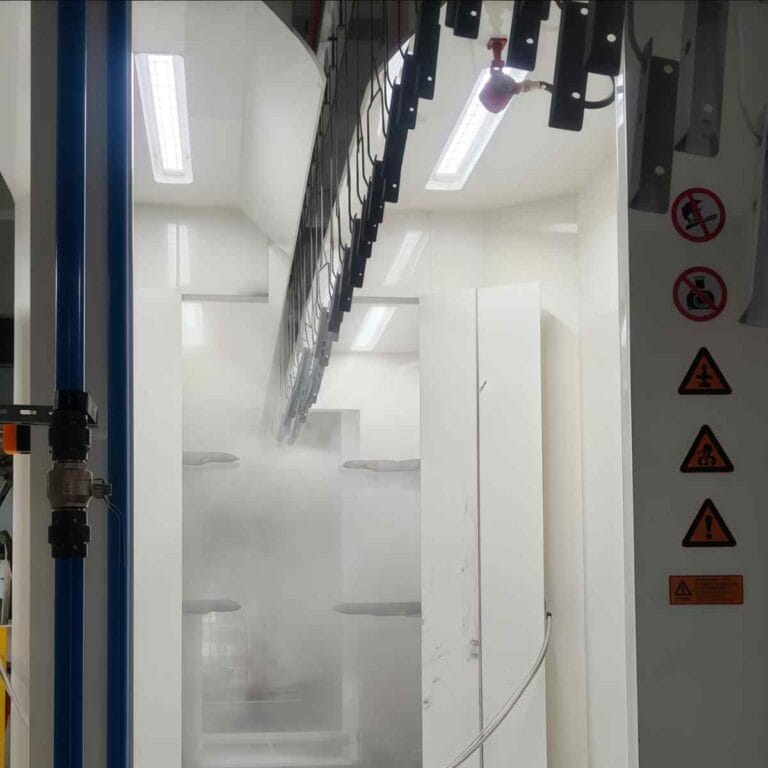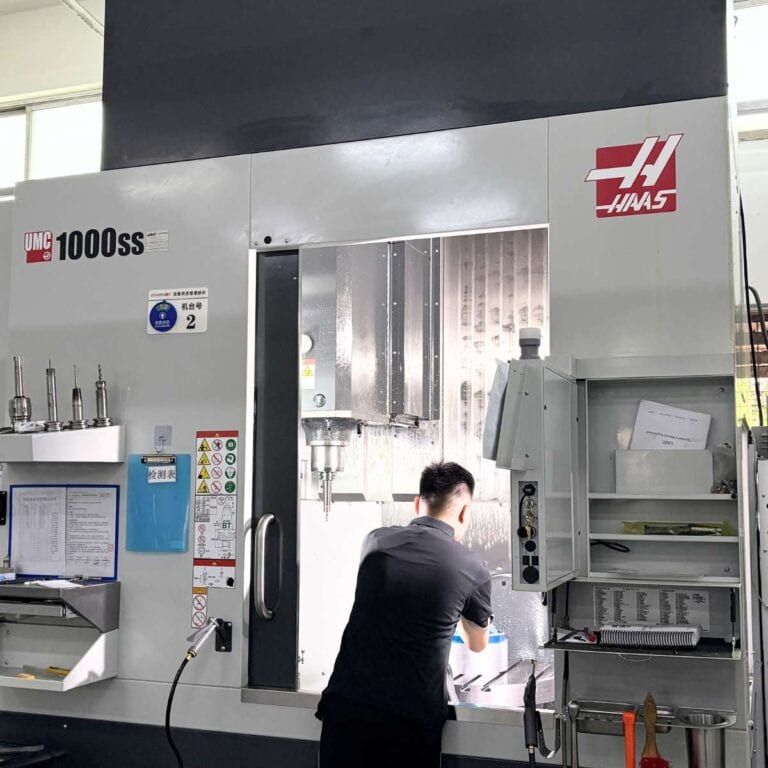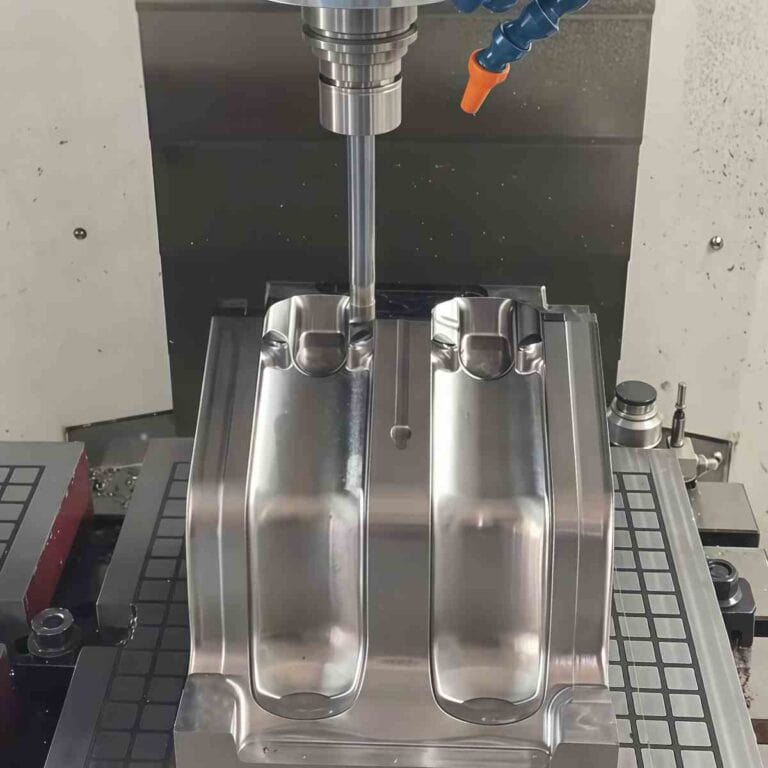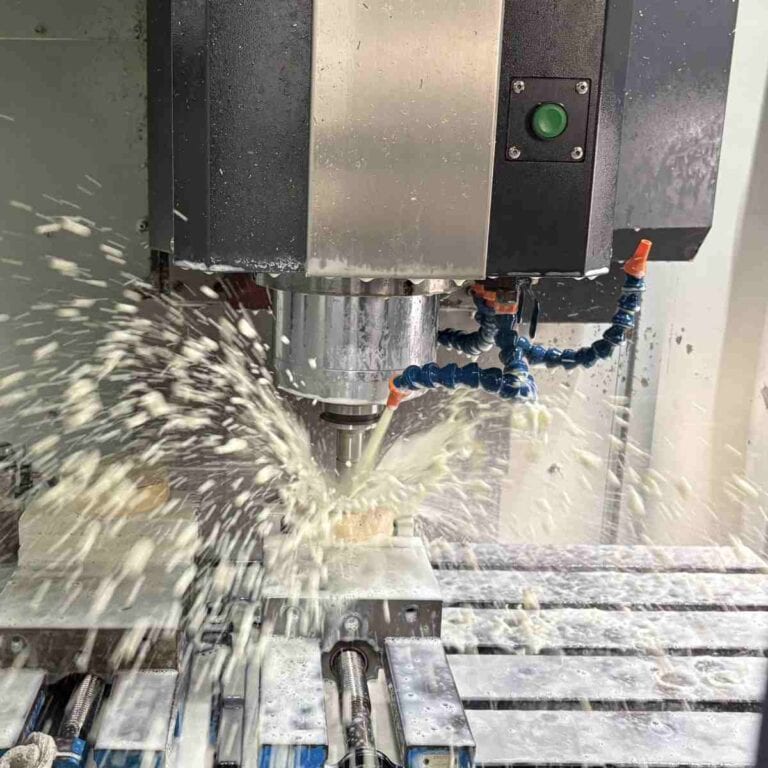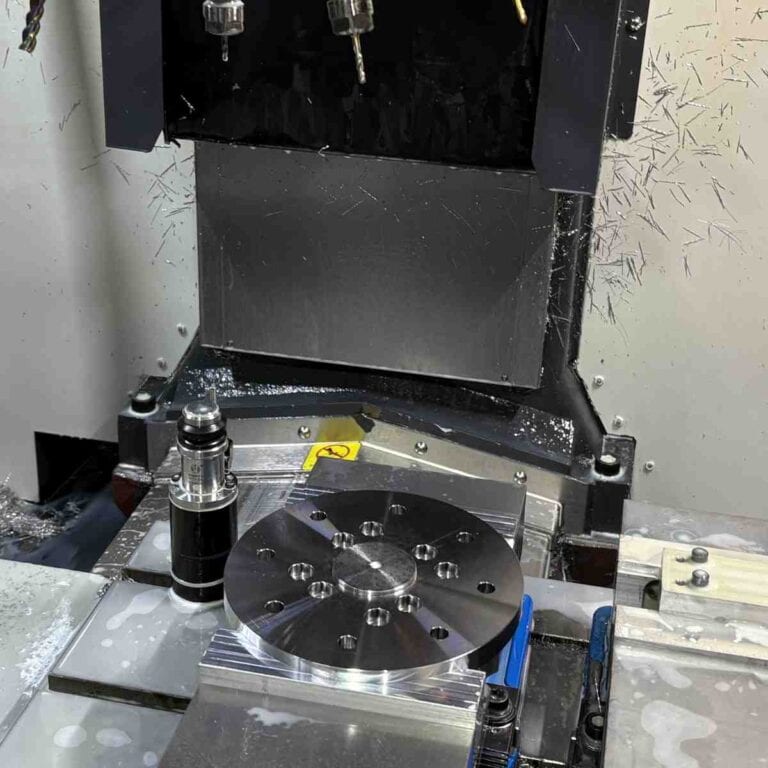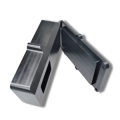What is Wire EDM?In the manufacturing industry, if you want to cut parts with complex shapes and high precision down to the micron level, Wire EDM is almost an unavoidable process. It does not use traditional tools to “clash hard”, but uses discharge to gently cut the metal like an electric “knife light”. For high-precision parts such as aerospace turbine blades, medical implants, and mold parts, Wire EDM is an efficient and stable choice. This article will take you to quickly understand this technology from the aspects of principles, equipment, machinable materials, and application fields, and tell you why it can occupy an important position in the field of precision manufacturing.
What Is Wire EDM
In my many years of precision machining experience, Wire EDM is almost the “ultimate weapon” for processing high-precision complex parts. It does not use a tool to “hard cut” like traditional milling or turning, but uses thin metal wire as an electrode to discharge pulse current to “erode” the metal little by little. This machining process has no cutting force and almost no deformation of the workpiece, which is particularly suitable for ultra-thin parts, complex contours and ultra-hard materials.
The development of wire EDM can be traced back to the 1960s. At that time, traditional electrospark machining (Sinker EDM) was already widely used, but its processing efficiency was limited, especially when deep grooves, slender molds or complex contours needed to be cut, and the process cost was high. Later, people thought of using a constantly moving metal wire to replace the fixed electrode, thus giving birth to wire cutting EDM technology. This innovation has completely changed the landscape of precision manufacturing, enabling industries such as molds, aerospace, and medical devices to efficiently process high-hardness, difficult-to-cut materials.
Compared with traditional EDM (formed electrode discharge), Wire EDM does not require the manufacture of special complex electrodes. The wire electrode itself is a “universal tool” that can flexibly cut various shapes according to the CNC path. Traditional EDM is more suitable for making deep cavities and complex cavities, while Wire EDM is good at two-dimensional contours and complex curves, with an accuracy of ±0.002mm and a surface roughness that can even be controlled at around Ra 0.1μm.
Mastering this technology means that you can easily handle tasks that are difficult to accomplish with traditional processing, such as precise contouring of super-hard alloys, burr-free cutting, and completing complex graphics with one clamping. This is why Wire EDM is considered one of the key technologies for precision manufacturing.
Wire EDM Works
At its core is the electric spark discharge. During the machining process, a very thin metal wire (usually brass or galvanized) is straightened and continuously moved, with the gap between the wire and the workpiece being only a fraction of the thickness of a human hair. The CNC control system releases a pulse current in this tiny gap, and each electric spark discharge instantly generates high temperatures on the surface of the workpiece, melting and vaporizing the metal locally, forming tiny pits. This process occurs at a very high frequency, just like “burning” a contour into the metal instead of cutting it hard.
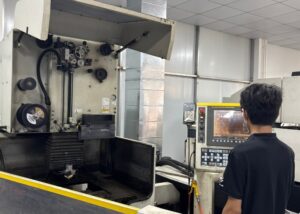
The entire process is precisely controlled by the CNC system. It moves the wire electrode along a complex two-dimensional or three-dimensional path according to the pre-programmed tool path, while keeping the spark gap constant. Because the wire electrode itself is constantly renewed (the used part is immediately rolled away), it will not affect the processing quality due to wear like traditional tools, which also ensures stability and accuracy.
Machining is generally divided into two stages: rough cutting and fine cutting. The goal of rough cutting is to quickly remove the material and cut out the contour of the part; then one or two fine cuttings are performed to control the surface roughness to the ideal range through more stable discharge parameters and slower wire speeds. For example, in the mold industry, the surface roughness after fine cutting can reach Ra 0.2μm or even better, and the dimensional accuracy can usually be maintained within ±0.002mm, which is almost unimaginable in conventional cutting.
In other words, Wire EDM is like holding an “electric pen” and gently “drawing” the desired shape on the metal. There is no cutting force in the process and almost no deformation. It is suitable for extremely thin, extremely hard, and extremely complex parts.
Wire EDM Equipment
To understand why Wire EDM (wire-cutting electrical discharge machining) can cut such high-precision parts, you must first understand its core components. Compared with the traditional “tool + spindle” processing method, Wire EDM relies on the combination of “wire + electric spark + water”. It seems simple, but in fact every link is very particular.
When I communicated with many processing plants, I found that some plants’ equipment looked similar, but the accuracy and efficiency were very different. The reason is often due to these key components:
Wire
EDM is actually a continuously moving metal wire. Common wires include brass wire, galvanized wire and molybdenum wire, with diameters generally ranging from 0.1mm to 0.3mm. The finer the wire diameter, the finer the cutting, but the speed is relatively slower. For high-precision molds or complex parts, 0.1mm thin wire is usually used.
Dielectric
cutting process. On the one hand, it acts as an insulator, concentrating the sparks between the wire and the workpiece and preventing random discharges; on the other hand, it can quickly wash away the metal particles produced by the processing, avoiding secondary discharges that cause rough processing surfaces, and helps reduce temperatures, making the size of the parts more stable.
Power Supply And Control System
The discharge process of Wire EDM is completed by pulse power supply, while the CNC control system is the “brain”, responsible for accurately controlling the movement path, current size and discharge frequency of the electrode wire according to the program. This system determines whether the processing process is stable and whether it can truly achieve micron-level accuracy.
Wire Guide And Tensioning Device
If the electrode wire deviates, it is equivalent to the tool taking the wrong path, and the part will definitely be scrapped. For this reason, the equipment is equipped with a special wire guide mechanism and tensioning system to keep the wire at the appropriate tension and direction at all times, ensuring that the cutting path is accurate and correct.
Workpiece Clamping And Cooling SystemThe
workpiece must be firmly fixed, otherwise even the slightest vibration can cause tolerance violations. The cooling system is equally important, as it ensures a constant temperature over the entire cutting area and avoids dimensional deviations caused by thermal deformation.
Break Detection
Wire EDM is very afraid of “wire breakage” because it means that a mark may be pulled out on the processed surface. Modern equipment is equipped with a wire break detection system. Once a wire break occurs, it will immediately stop the machine and alarm and prompt to re-thread the wire to avoid scrapping of parts.
These parts may seem insignificant, but if any one of them goes wrong, the entire processing accuracy may be affected. This is why some factories, although they have Wire EDM equipment, still cannot produce high-precision parts.
What Materials Can Be Processed By Wire EDM
Wire EDM is so popular because it can process almost all kinds of conductive materials “indiscriminately”. Its principle is not cutting by tools, but melting materials by electric spark discharge. Therefore, as long as the material can conduct electricity, it can be processed with high precision regardless of hardness or toughness.
I have encountered several typical cases in my projects:
High-hardness mold steel (H13, SKD11) → The tool wears very quickly during conventional tool processing, while Wire EDM can directly process the mold steel after quenching, eliminating the need for secondary finishing after heat treatment.
Titanium alloy aviation parts → When cutting titanium alloy, heat is concentrated and tool wear is severe. Wire EDM has no tool contact, so there is no need to worry about cutting force deformation and high temperature sintering.
Carbide punch → Carbide with a hardness of up to HRA90 is almost impossible to process with a milling cutter, but wire cutting can stably maintain an accuracy of ±0.005mm and a surface roughness of up to Ra0.2 μm.
Common machinable materials and their characteristics
| Material Category | Examples of common materials | Processing characteristics and applications |
| Aluminum Alloy | 6061、7075 | Lightweight, good thermal conductivity, easy to process, suitable for aviation and electronic heat dissipation structures |
| Titanium Alloy | Ti-6Al-4V (TC4), Grade 5 | High strength and corrosion resistance, suitable for aviation medical parts; traditional cutting is difficult, Wire EDM has obvious advantages |
| Stainless steel and die steel | 304, 316, H13, SKD11 | High hardness, easy to work harden; Wire EDM can achieve a stable accuracy of ±0.005mm |
| Copper vs Brass | C110, C3604 | Good conductivity, smooth cutting, suitable for electrode parts, connectors and electronic parts |
| Carbide and graphite | WC-Co cemented carbide, EDM graphite electrodes | Superhard materials can also be cut stably and are often used in the manufacture of precision molds and discharge electrodes. |
Through Wire EDM, many materials that are difficult or even impossible to process with traditional cutting can be formed in one go without worrying about stress deformation and tool loss. This is why the Wire EDM process is almost standard in the aerospace, medical equipment, mold manufacturing, and electronic semiconductor industries.
Where Is Wire EDM Used
It is indispensable in any industry involving precision, complex shapes, and difficult-to-process materials . In my project experience, I found that many complex curved parts, ultra-thin wall structures, and hardened mold steel parts that are difficult to process with traditional cutting are ultimately completed through Wire EDM. Especially in fields such as aerospace, medical implants, and electronic semiconductors that require extremely high precision and surface quality , Wire EDM has become a “standard process.”
| Industry | Typical machined parts/application examples | Processing advantages and characteristics |
| Aerospace | Turbine blades, engine parts, connecting structures | Suitable for titanium alloys and high-temperature alloys, can maintain ±0.005mm accuracy, zero cutting force and no deformation |
| Medical Implants and Devices | Orthopedic implants, dental implants, surgical tools | Can process biocompatible metals (such as titanium alloy, stainless steel), with no burrs on the surface and high safety |
| Automotive | Precision gears, fuel injection nozzle molds, stamping molds | Can process hardened die steel and cemented carbide, shortening the mold trial cycle |
| Dies and stampings | Plastic molds, stamping molds, carbide punches | Fine contour cutting, one-step forming and less post-processing |
| Electronics and Semiconductors | Precision connectors, radiator substrates, chip packaging molds | Suitable for thin-walled structural parts and high-precision copper parts, reducing tiny burrs |
| Jewelry, scientific research and niche precision parts | Precious metal jewelry, experimental equipment parts, special structure prototypes | Strong processing capability for complex curved surfaces and microstructures, suitable for small batch customized products |
Wire EDM is not only the “secret weapon” of high-end manufacturing, but also the core technology in the field of small batch, high precision and personalized customization . From the titanium alloy blades of aircraft engines to the precious metal hollow patterns in jewelry, it is inseparable from its precision and stability.
Advantages And Disadvantages Of Wire EDM
Wire EDM (wire cutting electrical discharge machining) is a representative process of high-precision machining. It can handle almost all kinds of complex geometries and difficult-to-machine materials, and is a common choice for precision manufacturing. However, it is not perfect. Understanding its advantages and disadvantages will help you make the best decision when choosing a process.
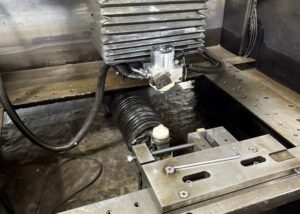
Advantage
Non-contact processing
Wire EDM is to erode the material through discharge, without mechanical cutting force. The stress on the workpiece during processing is almost zero, which is suitable for ultra-thin-wall parts, slender parts and tiny complex structures.
High shape freedom
It can process sharp angles, inner grooves, complex curved surfaces, micro holes and ultra-thin features that traditional tools cannot complete. It is particularly suitable for molds, tools, electrodes and medical micro parts.
High Precision and High Surface Quality
The machining accuracy of Wire EDM is stable at ±0.002~0.005 mm, and the surface roughness can be as low as Ra 0.2 μm. It is an ideal process for aviation parts, medical implants, etc. that require extremely high assembly accuracy and surface quality.
Strong material adaptability
Compared with traditional milling, Wire EDM is not picky about hardness. It can easily process high-strength materials such as hardened steel, cemented carbide, titanium alloy, and even cut some composite structural parts.
No deformation caused by cutting force
Traditional tool cutting may cause workpiece warping, while Wire EDM is completely processed by electrical discharge, which hardly causes deformation and is particularly friendly to thin-walled parts.
The processing is controllable and repeatable.
Because it is CNC controlled, the cutting path is stable and repeatable, which is suitable for multiple processing or batch production of complex parts.
Shortcoming
Conductive materials only
Wire EDM must rely on the conductivity of the material to discharge corrosion, so non-conductive materials such as plastics and ceramics cannot be processed directly.
Compared
with laser cutting or high-speed milling, Wire EDM is less efficient in mass production of parts, especially when cutting thick plates or large-section parts.
Thickness limitation:
The processing thickness of conventional machines is generally limited to 300mm. Extra thick plates require special machines and the processing time is significantly increased.
The electrolytic corrosion layer affects
the surface after processing and forms an electrolytic corrosion deterioration layer (white layer), which requires additional cleaning or heat treatment in parts with high fatigue life or high requirements, increasing the process cost.
Consumables and operating costs
Electrode wire is a consumable that is continuously consumed during the processing and requires dielectric fluid and wire guide mechanism maintenance. The overall operating cost is relatively high compared to tool cutting.
Wire EDM is suitable for high-precision, difficult shapes, hard materials and stress-free processing. It is the preferred process for mold manufacturing, medical implants, aviation parts and high-precision scientific research devices.
However, if you pursue production capacity or process non-conductive materials, you need to consider alternatives such as laser cutting and high-speed milling, or use Wire EDM as an auxiliary process.
Processing Accuracy And Efficiency
In the field of precision manufacturing, one of the most important reasons for choosing Wire EDM (wire-cut electrical discharge machining) is its high precision and stability . Through the CNC-controlled discharge machining process, Wire EDM can achieve micron-level accuracy while maintaining zero cutting force, making it the first choice for mold manufacturing, medical devices and aviation parts.
How Precise Can It Be
The machining accuracy of conventional Wire EDM can be stabilized at around ±0.005 mm, and high-precision models can even reach ±0.002 mm, and can process very fine internal angles, narrow slots and tiny features. Its surface roughness can be controlled at Ra 0.2~0.4 μm in the finishing mode, without the need for a large number of subsequent polishing processes.
How Thick Can You Cut At One Time
The cutting thickness of Wire EDM depends on the equipment specifications and the diameter of the electrode wire. Common models can cut 200~300 mm thick workpieces at a time, and some large-stroke equipment can even reach a processing capacity of 500 mm. For ultra-thick materials, although the cutting time will be extended, the accuracy is still controllable, and it will not produce large stress deformation like traditional cutting.
How To Improve Speed And Stability
To improve efficiency while ensuring accuracy, you can optimize from the following aspects:
Process parameter optimization : Reasonably adjust the discharge energy, pulse width and feed speed to ensure stable discharge and smooth cutting channel.
Layered cutting process : first rough cut to remove most of the material, and then perform multiple skim cuts to improve surface finish and dimensional accuracy.
Choose the right electrode wire : Coated brass wire or high-performance electrode wire can improve discharge efficiency and reduce the risk of wire breakage.
Stable dielectric fluid circulation and filtration : timely clean up chips and spark corrosion products to avoid secondary discharge affecting surface quality.
Environment and machine status control : Constant temperature environment, regular guide wire calibration and tension adjustment can reduce error accumulation.
Wire EDM achieves a unique balance between precision and efficiency: although its speed is not as fast as high-speed milling, it can maintain extremely high consistency and reliability in the processing of complex shapes, hard materials, and tiny details. Through reasonable parameters and process optimization, it can fully meet the needs from single-piece prototyping to small-batch precision production.
Cost And Time
When actually performing Wire EDM processing, the two questions that customers are most concerned about are often “how much does it cost” and “how long does it take to complete”. These two questions are not answered based on feelings, but have a relatively clear calculation logic. Based on my many years of experience in wire cutting processing, the cost is mainly affected by the type of material, part thickness, processing accuracy and structural complexity, while the time is closely related to equipment performance, operating experience and process parameters.
First, the material will directly affect the price. For example, ordinary aluminum alloy and brass have fast cutting speed and simple tool path, so the unit price is relatively low; while materials such as titanium alloy and hard steel have poor electrical conductivity, slow processing speed, and large tool wear, so the cost will naturally rise. The second is thickness. A 10mm thick aluminum plate may be cut in dozens of minutes, while a 200mm thick mold steel often takes several hours or even more than ten hours to complete.
Machining accuracy is also an important variable. Ordinary tolerances of ±0.01mm are considered routine machining, but if the customer requires ±0.002mm or higher, multiple finishing cuts (usually 3 to 5 finishing cuts) are required. Each additional finishing cut will increase the time by at least 20% to 30%. In addition, the complexity of the part shape also significantly affects the machining cost. Complex parts with a large number of sharp angles, curves, and internal grooves not only require longer programming time, but also more wire paths. The overall machining time is often more than doubled that of ordinary rectangular parts.
As for time, the processing cycle of standard parts can be estimated by empirical formulas. For example, for every 10mm thick steel part, rough cutting plus two fine cutting takes an average of about 1.5 to 2 hours; if the material is changed to carbide or multi-layer cutting is required, the time may double. Overall, although Wire EDM is slower than traditional milling, its time cost is exchanged for design freedom and dimensional accuracy in the processing of precision parts and complex shapes.
In summary, there is no single fixed value for the cost and time of Wire EDM. It is a dynamic balance. Understanding these influencing factors can help customers make reasonable structural optimization and precision requirements in the design stage, thereby reducing manufacturing costs and shortening delivery cycles.
Safety And Maintenance
During the Wire EDM process, safety and maintenance are the basis for ensuring production stability and processing quality. Although wire cutting does not have high-speed rotating tools like traditional machining, it involves high-voltage pulses, dielectric fluids, and precision moving parts, and still requires strict safety operations and daily maintenance.
During use, first ensure that the operator is trained and familiar with the control system and emergency stop function of the equipment. Although the high-voltage discharge is localized in a small area, misoperation may lead to the risk of electric shock, so a good grounding system must be maintained and bare-handed contact with the processing area is prohibited. In addition, the management of the dielectric fluid is also crucial. The fluid must be kept clean to avoid accumulation of conductive particles that may cause short circuits or reduce discharge stability. Protective glasses must be used during processing, and the processing area must be kept dry to avoid the risk of slipping.
In terms of maintenance, Wire EDM is a high-precision device, and daily maintenance cannot be ignored. First, the guide wheel and tensioner should be checked regularly for wear to keep the wire running stable and prevent the accuracy from being affected by deviation. Secondly, the filter element and pump system need to be replaced regularly to ensure the cleanliness of the dielectric fluid and the stability of the flow. The guide rails and lead screw components should be cleaned and lubricated regularly to avoid motion errors after long-term use. In addition, the broken wire detection system, cooling system and CNC control module should be checked regularly to ensure the normal status of the equipment.
By complying with safety regulations and implementing routine maintenance, not only can operational risks be avoided, but also the life of the equipment can be significantly extended, the failure rate can be reduced, and production efficiency and processing accuracy can be improved.
Future Development Trends
The future development trend of Wire EDM is moving towards intelligence, automation and high precision. As the demand for complex and high-precision parts in the manufacturing industry continues to increase, wire cutting technology is undergoing significant technological upgrades.
Intelligence is a key direction. The new generation of Wire EDM equipment is integrating more sensors and AI algorithms to achieve real-time monitoring and adaptive parameter adjustment. For example, by online monitoring of processing current, wire tension and discharge status, the system can automatically optimize cutting parameters and reduce human intervention, thereby significantly improving yield and processing stability.
Automation is also a development focus that cannot be ignored. More and more equipment supports automatic wire changing, automatic clamping and unmanned operation, which enables the equipment to achieve 24/7 continuous processing and greatly improve production efficiency. For companies engaged in mass production and high-complexity parts, this means a further reduction in production costs and labor costs.
In addition, with the development of emerging industries, Wire EDM is expanding into the processing of tiny parts and new materials. For example, in the medical device, semiconductor and new energy industries, there is an increasing demand for processing micron-level parts, ultra-thin structural parts and high-hardness composite materials. By further reducing the diameter of the electrode wire and optimizing the discharge control, Wire EDM can process thinner and more complex materials while maintaining high precision.
In general, the future Wire EDM technology will be smarter and more efficient, and will develop rapidly in the direction of miniaturization and multi-material adaptation, which will not only expand its scope of application, but also promote the precision upgrade of the entire manufacturing industry.
FAQs
What Is A Wire EDM Used For?
Wire EDM is primarily used for cutting complex shapes and tight-tolerance parts from conductive materials. I often use it for hardened tool steels, titanium, and carbide components. It excels in applications such as aerospace components, medical implants, precision molds, and delicate electronic parts where ±0.005 mm accuracy is required.
What Is The Difference Between EDM And Wire EDM?
EDM typically refers to sinker EDM, which uses a shaped electrode to erode material, while wire EDM uses a continuously fed wire to cut profiles. I choose wire EDM for through-cuts and intricate geometries, whereas sinker EDM is best for cavities and blind holes. Wire EDM also offers superior accuracy for complex, thin-walled parts.
What Does EDM Mean In Electrical?
EDM stands for Electrical Discharge Machining, a process where controlled electrical sparks remove material. I apply EDM to materials too hard for conventional machining, like hardened steels and carbides. The process uses dielectric fluid, high-voltage pulses, and electrode positioning to erode material without mechanical contact, preventing tool pressure and distortion.
What Are The Disadvantages Of Wire EDM?
Wire EDM has several limitations: it only works on conductive materials, making plastics or ceramics unsuitable. It is slower than conventional milling or laser cutting and has limitations on part thickness depending on machine capacity. I also consider higher operational costs due to consumable wire and dielectric fluid use when quoting projects.
What Are The Advantages Of Wire Cut EDM?
Wire EDM offers exceptional accuracy, often within ±0.005 mm, and can cut complex shapes without mechanical stress or tool wear. I often use it for hardened or delicate parts where traditional machining risks damage. It produces burr-free finishes and eliminates secondary processing after heat treatment, which saves time and ensures quality.
Is Wire EDM Expensive?
Wire EDM is more expensive than standard milling because of slower cutting speeds and consumables like brass wire and dielectric fluids. In my experience, it’s cost-effective for intricate, high-value parts where accuracy and surface finish matter most. For complex geometries or hardened materials, the added expense is often justified by reduced finishing work.
Conclusion
As an engineer who has been engaged in wire cutting for a long time, I deeply appreciate its unique advantages. Wire cutting can not only easily handle hardened steel, titanium alloy and other difficult-to-process materials, but also maintain high precision of ±0.005mm. At the same time, it can stably process complex contours and tiny parts, avoiding the stress deformation and tool wear problems common in traditional cutting, greatly reducing the subsequent finishing process, and improving production efficiency and product quality simultaneously.

